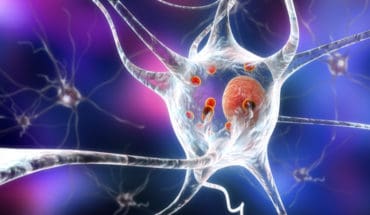Researchers from the University of Glasgow are part of a cross-Europe project which is aiming to develop a revolutionary new method of treating a wide range of neurological disorders. The Wireless Deep Brain Stimulation Through Engineered Multifunctional Nanomaterials project, or BRAINSTORM, is setting out to develop tiny injectable magnets which could help restore function to damaged neurons in patients’ brains.
The BRAINSTORM team hope that their research could treat, or even cure, conditions like depression, panic attacks, epilepsy, Alzheimer’s disease or Parkinson’s disease.
The nanoscale magnets the team will develop will eventually be injected into rodents’ bloodstreams in a preclinical study and controlled using external magnets to deliver neurostimulation to specific neurons in their brains.
Neurostimulation, which uses electrical currents or magnetic fields to modulate the activity of nerves or neural circuits, is already in use to treat a variety of brain-related conditions, often accompanied by surgeries to implant the electrodes which deliver the treatments.
Over the next four years, researchers from the University of Glasgow will partner with colleagues from Germany, Italy, Spain and Finland to develop the BRAINSTORM technology, which could deliver improved results with less invasive techniques.
The University of Glasgow researchers are partnering with colleagues from Germany, Italy, Spain and Finland on the project, which is supported by €3m (£2.57m) from the European Innovation Council’s Pathfinder programme. The Pathfinder programme provides funding for researchers to develop emerging breakthrough technologies.
Hadi Heidari, Professor of Nanoelectronics at the James Watt School of Engineering, is leading the University of Glasgow’s contribution to BRAINSTORM.
He and his team at the School’s Microelectronics Lab will develop a wearable helmet-like device that will use magnets to control the positioning of nanomaterials, enabling neuromodulation treatments to be precisely targeted in the brain.
He said: “Neuromodulation is a treatment that has shown a great deal of potential for treating many conditions. However, our present methods of delivering neuromodulation can require invasive surgeries to implant electrodes, which can be expensive, painful and expose patients to an increased risk of infection.
“BRAINSTORM is an exciting new opportunity to rethink how wireless neuromodulation is delivered. It builds on recent advances in magnetic coil nanofabrication, materials science and medicine to allow us to find new ways to precisely ‘switch on’ or ‘switch off’ neuronal activity for therapeutic effects.
“I’m pleased to be working with my colleagues across Europe on this research, and I’m looking forward to developing some of the key technologies which will help patients benefit from new treatments in the years to come.”
BRAINSTORM Is led by Professor Danijela Gregurec of the Friedrich-Alexander-Universität Erlangen-Nürnberg in Germany. Researchers from CIC biomaGUNE in Spain, Tor Vergata University in Italy, and the University of Helsinki in Finland are contributing to the project along with the University of Glasgow.
- New lipid-based pathway discovered as key to memory formation - 25th June 2025
- Crucial link could explain how Alzheimer’s takes hold - 25th June 2025
- Understanding Your Mind Can Improve Daily Life - 25th June 2025






